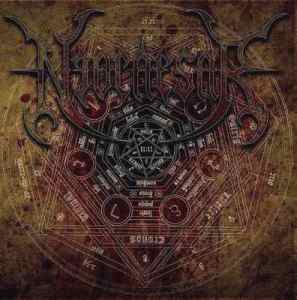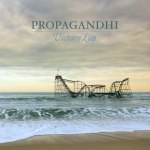Filed under: death metal, Heavy metal, people, popular music | Tags: Alex Marquez, Anders Schultz, benediction, Brian Harvey, Dark Funeral, Dave Lombardo, Deeds of flesh, Dismember, dying fetus, Ed Warby, Fred Estby, Gorefest, Holy Terror, Janne Saarenpää, Joe Mitchell, Kevin Talley, King Diamond, Lock up, Malevolent creation, Mike Hamilton, Mikkey Dee, Nick Barker, Nils Fjellström, Paul Bostaph, Paul Brookes, Pig destroyer, Slayer, The crown, Unleashed
In my early contact with metal as a teenager drums were of tertiary importance compared to guitar and voice. My first love was Iron Maiden, and although over the years I came to appreciate Clive Burr’s and Nicko McBrain’s skills and contribution to Maiden’s sound, my untrained teenage ear could not appreciate the nuances. My second love was Dio, and just like with Maiden what I fell in love with was the voice and the guitar-playing. I obviously enjoyed listening to Appice’s hard hits, McBrain’s speed on songs like “Deja vu“, I remember falling in love with Ulrich’s fills on “For whom the bell tolls“, or Columbus’s double-bass attack on “Black wind, fire and steel“, but I did not start really noticing the drums until I started listening to thrash, and specifically when I listened to Reign in blood by Slayer. After that, and the more my taste would gravitate towards extreme metal the more attention to the drumming I would pay. Who doesn’t like a great drum break in the middle of a song (*a future post is in order*), or an awesome drum intro?! Through memory work (so, simply by trying to remember) I came up with many awesome drum intros that have stayed with me throughout my life as a metal fan, and after subsequent filtering (as a result of which amazing songs by Hypocrisy, Judas Priest, Death, Xentrix, Ozzy and Kreator, among others, were left out) I present 15 of them here in chronological order.
 1. Slayer – Epidemic (1986)
1. Slayer – Epidemic (1986)
Reign in blood blew my mind and continues to blow my mind no matter how many times I’ve listened to it. It’s funny how, as years go by and new trends in metal emerge, many younger people are no longer impressed by this masterpiece (which is something that I once thought impossible). “When was the last time you truly listened to Reign in blood?”, asks Gavin O’Connor. Seriously, Gavin O’Connor? Still, I would imagine for most people, it is a guilty displeasure not liking this absolute masterpiece and they wouldn’t dare admitting it (as opposed to Gavin who owns his opinion, is proud of it, and so I can make fun of him for being a poser who only listens to “Angel of death” and “Raining blood”). “Epidemic” has always been one of my favourite songs off Reign in blood, as it has a different groove to the dominant skank beat throughout the album. The drum intro has a lot to do with how much I like this song. Whenever I think of a drum intro this is honestly the first song that comes to mind. Nowadays, and after three decades of extreme metal drumming, this intro sounds quite “primitive”, but when I first heard it I would just play it over and over again, for several times before I continue with the rest of the song. Nothing compares to Dave Lombardo‘s intense and quite instinctive old school drumming massacre. The simply devastating drum sound captured on tape by Rick Rubin is not bad either.
 2. King Diamond – Welcome home (1988)
2. King Diamond – Welcome home (1988)
Mikkey Dee, now famous for being the drummer for Motörhead for almost 25 years, used to be in King Diamond. With him the King released some of his best albums (and my two personal favourite, namely Fatal portrait and Conspiracy), and I actually remember seeing or reading an interview with King Diamond where he said that Mikkey has been sorely missed (I personally think that Snowy Shaw did an awesome job as well). Indeed, the impressive drum performances in King Diamond’s early albums compared to the almost mechanical drumming in this last few albums is like comparing night and day. “Welcome home” is a masterful track off Them, and the intro is one of the most memorable and classy drum parts I can think of. Overall, this song represents the pinnacle of King Diamond’s progressive dimension. Agressor did an accurate cover of this song on their Medieval rites (1999) album, although the drum intro is neither entirely accurate nor has the feel of the original.
 3. Holy Terror – No resurrection (1988)
3. Holy Terror – No resurrection (1988)
Holy Terror released two albums in the late 1980s, at a time when thrash was still alive and well but slowly losing ground as the first death metal albums, as well as the more extreme thrash bands of Germany, began to surface. The second album by Holy Terror is a minor thrash masterpiece and this song is a testament to that. Their peculiar style of metal that combined traditional heavy metal melodies and singing, with rougher and at times growling vocals, super fast riffs and drums, deserved more recognition in my opinion. Joe Mitchell‘s expertly executed super fast beats perfectly complement the super-fast vocal delivery. The intro to this song is an all-time favourite, and is the perfectly manic start for a perfectly manic song. I have been listening to it since my teenage years and it still does not fail to excite me. They don’t make them like this anymore.
 4. Malevolent Creation – Coronation of our domain (1992)
4. Malevolent Creation – Coronation of our domain (1992)
Alex Marquez gave his best performance on Malevolent Creation’s Retribution. His contribution on this album cannot be overestimated, and never before or after did Malevolent have such a beautiful drum sound and playing, and orchestrations. This drum intro is probably the best out of all the intros in this list. This is the definition of finesse in drumming. I struggled on whether I should include this song here. Malevolent Creation has been the home to some racist scum throughout its history, so they are not welcome in this blog. At the same time, I thought it would be unfair to erase Marquez’s contribution because he happened to be in a band which later on in its career (when Marquez was not part of it anymore) became openly racist.
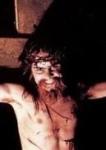 5. Dismember – Fleshless (1993)
5. Dismember – Fleshless (1993)
This is an extremely simple fast single stroke drum roll (I think so) spread across two toms, opening one of the best songs in one of the best albums in the history of music (yes, not only death metal). One of the reasons I love it so much is because to me this intro is like saying “get ready for some non-stop relentless beating”, and indeed this is exactly what follows throughout the album. Remember, this is not a playlist with the “best” drum intros, but rather my favourite drum intros, and this is definitely one. I simply adore the drum sound on this album, and Fred Estby‘s playing is really exciting. Indecent and obscene is probably my all-time favourite death metal album, and Fred’s playing is one of the reasons.
 6. Gorefest – Peace of paper (1993)
6. Gorefest – Peace of paper (1993)
It’s no big surprise that all of the songs on this list come from albums characterised by great drum performances. In both False (1992) and Erase (1993) Ed Warby gives lessons in extreme metal drumming. His sound is clear, he hits hard, and his blastbeats are a force of nature. “Peace of paper” is an astonishing song off an amazing album, and it is also the song where Warby goes crazy with his snare-kick gymnastics. The drum intro is not anything special, but I love it. I think that his performance in these two albums opened up doors for him, as I recall seeing his name in many projects over the years. Gorefest did a very impressive comeback in the mid 2000s and then unfortunately folded again, and in those two comeback albums Warby also did an amazing job.
 7. Slayer – Killing fields (1994)
7. Slayer – Killing fields (1994)
Divine intervention is a galore of outstanding drum work by Paul Bostaph. Quite honestly, when I bought this album I could not believe how someone can play like this, and to this day I consider Divine intervention a masterpiece with state-of-the-art drumming. This album is chock-full of drum highlights, and apart from this song, “Sex, murder, art” and “Serenity in murder” are personal favourites. There is no doubt that Paul knew that filling Lombardo’s shoes would be hard, mostly in terms of acceptance by the hardcore fans rather than actual performance, and did his absolute best to prove himself with this album. In my opinion, the intro of “Killing fields” is one of the heaviest and attention-grabbing moments in metal history.
 8. Benediction – The grotesque (1994)
8. Benediction – The grotesque (1994)
Benediction is not a band known for its virtuoso musicianship. It is known, however, for its absolutely awesome and unique-sounding death metal. “The grotesque” is one of Benediction’s best songs and it comes from the Grotesque/Ashen epitaph EP. This EP marked the departure of Ian Treacy, Benediction’s original drummer, whose improvement from Subconscious terror (1990) to Transcend the Rubicon (1993) was nothing short of stellar, and the short-lived collaboration with Paul Brookes (who has been very ridiculously photoshoped into the photo of the band on this release). I personally prefer Treacy, who has also provided some really cool drum parts, but nevertheless, Brookes offers a very memorable drum intro to this beast of a song.
 9. Unleashed – In the name of god (1995)
9. Unleashed – In the name of god (1995)
“In the name of god” starts with a very simple double stroke roll, yet constitutes an extremely effective drum intro which has always stayed with me. The fact that it opens one of the catchiest songs in death metal history, composed by Fredrik, obviously adds to the importance of this drum intro, but there is no doubt that Anders Schultz‘s contribution to Unleashed’s sound is significant (also check out the awesomely placed double bass à la Slayer at the end of the song). Victory is, in my opinion, the last great album by Unleashed, and it is not a coincidence that it is also the last album with Fredrik Lindgren. He is one of the composers that is missed in the death metal genre.
 10. Dying Fetus – Justifiable homicide (2000)
10. Dying Fetus – Justifiable homicide (2000)
1999 was the year my friends and I found out about the then new wave of North American brutal death metal. A fiend of mine got hold of three awesome cassette-tapes; one with Deeds of flesh‘s Trading pieces (1996) and Inbreeding the anthropophagi (1998), one with Nile‘s Among the catacombs… (1998), and one with Dehumanized‘s Prophecies foretold (1998) and Dying Fetus‘s Purification through violence (1996). When Destroy the opposition came out we didn’t listen to anything else for a month. This is probably the least interesting song on the album, but what a great and memorable intro! Kevin Talley is a great drummer hailing from the American brutal death metal underground who has rightfully been recognised as one. His drumming on albums like Killing on adrenaline and Destroy the opposition are unbelievable. Unfortunately, in my opinion, the separation of Jason and Kevin from Gallagher resulted in inferior subsequent output from both Dying Fetus and Misery Index. Anyway, this whole album is a drummer’s pleasure.
 11. The Crown – I won’t follow (2000)
11. The Crown – I won’t follow (2000)
The Crown has always been a hit and miss band in my opinion. I never liked any of their albums in their entirety, just individual songs, and if I had to pick a favourite album I would choose Hell is here (1999). This song comes from Deathrace king, an album from which I worship two songs and the rest of them I listen to once every ten years or so. “I won’t follow” is one of the songs I worship, and the other is the inimitable “Back from the grave”. Janne Saarenpää‘s style is very intense and out-of-control and often reminds me of Chris Witchhunter from Sodom (I’m thinking of “Baptism of fire”). This is the definition of in-your-face extreme metal drumming of the type that inspires kids to pick up drumsticks and learn to play.
 12. Deeds of Flesh – Master of murder (2001)
12. Deeds of Flesh – Master of murder (2001)
Mike Hamilton‘s stint with Deeds of Flesh started with an album (i.e. Mark of the legion) which, for me, marked the creative downfall of the band. However, just like the drummers that preceded him, Hamilton’s drumming is amazing, and this song is a case in point. A beautiful, yet cold and lifeless, phrase composed of super fast double strokes and double bass, introduces an awesome riff. The way Hamilton switches from the hi-hat to the ride cymbal during the blastbeats, and the effect this has on the riff is also great. Later on in their career Deeds of Flesh tried to reinvent themselves and switched to super-technical death metal and, in my opinion, lost their distinctiveness that is still present in this song.
 13. Pig Destroyer – Snuff film at eleven (2001)
13. Pig Destroyer – Snuff film at eleven (2001)
Just like Dying Fetus’s Destroy the opposition, Pig Destroyer’s Prowler in the yard was a game changer in the world of extreme metal. Brian Harvey provides super fast blastbeats, grooves, and insane drum fills. This song is one of the most death-oriented songs on the album, and has such an awesome drum intro, representative of the musical and lyrical insanity that reigns throughout the album. What contributes to the awesomeness of this intro is that it does not lead to a fast beat but a tensely controlled slow beat. Harvey’s performance on the next album (i.e. Terrifyer) is also stellar. Having a drummer like this at one’s disposal is an amazing privilege, because it gives one absolute freedom to write anything they want, no matter how fast and complex.
 14. Lock Up – Feeding on the opiate (2002)
14. Lock Up – Feeding on the opiate (2002)
Nick Barker is one of those drummers who make extremely fast drumming seem easy. I fell in love with his drumming when Cradle of Filth‘s Dusk and her embrace came out, and I loved him even more in Lock Up, although his repertoire in the latter is much more limited. His performance with Cradle of Filth rightfully opened doors for him as over the years he has played with many prominent bands. This is actually one of the best album intros ever, and I cannot believe that I forgot to mention it in the respective post I wrote a few years ago. Overall, Hate breeds suffering is my favourite Lock Up album too. Bill Hicks’s inspiring statement, “Play from your fucking hearts!”, sampled at the beginning of the song is also genius.
 15. Dark Funeral – The eternal eclipse (2016)
15. Dark Funeral – The eternal eclipse (2016)
The final entry in this list comes from a recent album, namely Dark Funeral’s very impressive Where shadows forever reign. Dark Funeral has a history of great drummers, including the brilliant Matte Modin (who offered devastating drumming for Defleshed back in the day). In this album the drums are provided by Nils Fjellström, another master of inhuman speed in drumming (check out videos of him performing live with the band on YouTube, you won’t be disappointed). “The eternal eclipse” is my favourite song off this album, and the drum intro is perfect.
Filed under: Best of the year, death metal, Heavy metal, punk | Tags: 2017, Desultory, immolation, Lock up, Memoriam, Morbid Angel, Neocaesar, paradise lost, Propagandhi, Rage, Skyclad
The year 2017 is marked by some fantastic musical releases. This year it was more difficult than usual to come up with only 10 favourite albums, and amongst those 10 albums it was difficult to say which ones I liked best. There are many albums that did not make my top-10 list but I also enjoyed quite a lot. Due to the sheer volume of releases by bands I already like I avoided opening up to new bands which I am more likely to dislike. I will start my review of the year with the albums I liked the least.
 The initial reaction to Cannibal Corpse‘s new album was one of disappointment. After a couple of listens I started enjoying the album, but then quickly got tired of it. In my mind CC’s discography is organised in two periods, the Barnes and the Corpsegrinder period, and the latter is further broken down to the Owen period and the Barrett period. The Barnes period is my favourite, I consider it very distinct, and I think that his departure marked a huge stylistic change for CC. I think that Barnes’s way of singing, vocal patterns and lyrics defined to a large extent CC’s style. I never took the Corpsegrinder era too seriously, as I have always thought that the band became a bit cartoonish. This doesn’t mean that I don’t like CC post-Barnes. Both periods offer some excellent albums (maybe with the exception of Gore obsessed). The current post-Owen era, is probably my least favourite, although I think all offerings are consistently good. The new album is enjoyable although the thrash approach to riffing and song structures that appeared in most recent releases is even more prominent now. It is also much less frenetic to their previous album (there’s not a single pure attack similar to “High velocity impact spatter”), and sonicaly, well lets just say Rutan is not my favourite producer. “Code of the slashers” has a cool slow section, but when it becomes fast it feels lazy to me. The structure, tempo changes, melodies and beating of “Shedding my human skin” represent the CC that I prefer. Other stand-out tracks include “Corpus delicti“, “In the midst of ruin”, “Destroyed without a trace” (great post-chorus blastbeat sections) and “Hideous ichor” (the intro riff is straight out of Kreator’s Coma of souls). Overall, it is a quite easy-listening album, and in a sense their least death metal album yet. Vallenfyre‘s Fear those who fear him has some really cool grinding songs (e.g. “Kill all your masters” and “Nihilist”), but in my opinion in lacking standout slow melancholic hymns. I listened to it a few times and I like it, but I would never compare it to the brilliance of their debut. Similarly, I
The initial reaction to Cannibal Corpse‘s new album was one of disappointment. After a couple of listens I started enjoying the album, but then quickly got tired of it. In my mind CC’s discography is organised in two periods, the Barnes and the Corpsegrinder period, and the latter is further broken down to the Owen period and the Barrett period. The Barnes period is my favourite, I consider it very distinct, and I think that his departure marked a huge stylistic change for CC. I think that Barnes’s way of singing, vocal patterns and lyrics defined to a large extent CC’s style. I never took the Corpsegrinder era too seriously, as I have always thought that the band became a bit cartoonish. This doesn’t mean that I don’t like CC post-Barnes. Both periods offer some excellent albums (maybe with the exception of Gore obsessed). The current post-Owen era, is probably my least favourite, although I think all offerings are consistently good. The new album is enjoyable although the thrash approach to riffing and song structures that appeared in most recent releases is even more prominent now. It is also much less frenetic to their previous album (there’s not a single pure attack similar to “High velocity impact spatter”), and sonicaly, well lets just say Rutan is not my favourite producer. “Code of the slashers” has a cool slow section, but when it becomes fast it feels lazy to me. The structure, tempo changes, melodies and beating of “Shedding my human skin” represent the CC that I prefer. Other stand-out tracks include “Corpus delicti“, “In the midst of ruin”, “Destroyed without a trace” (great post-chorus blastbeat sections) and “Hideous ichor” (the intro riff is straight out of Kreator’s Coma of souls). Overall, it is a quite easy-listening album, and in a sense their least death metal album yet. Vallenfyre‘s Fear those who fear him has some really cool grinding songs (e.g. “Kill all your masters” and “Nihilist”), but in my opinion in lacking standout slow melancholic hymns. I listened to it a few times and I like it, but I would never compare it to the brilliance of their debut. Similarly, I  liked Firespawn‘s sophomore album, although I don’t think I will ever consider it amazing, and I prefer their debut. Some songs I liked more than others (“The general’s creed”, “Full of hate” and “Serpent of the ocean” are my favourite), there are some nice melodies and Fredrik’s leads are enjoyable as usual, but I found the song structures and riffs forthcoming and repetitive, in many cases reminiscent of the simpler forms of early thrash. Warwound‘s Burning the blindfolds of bigots is an enjoyable hardcore-crust album made by members of Sacrilege and Discharge.
liked Firespawn‘s sophomore album, although I don’t think I will ever consider it amazing, and I prefer their debut. Some songs I liked more than others (“The general’s creed”, “Full of hate” and “Serpent of the ocean” are my favourite), there are some nice melodies and Fredrik’s leads are enjoyable as usual, but I found the song structures and riffs forthcoming and repetitive, in many cases reminiscent of the simpler forms of early thrash. Warwound‘s Burning the blindfolds of bigots is an enjoyable hardcore-crust album made by members of Sacrilege and Discharge.
Moving on to albums I liked a bit more, Evocation‘s The shadow archetype kept me nice company for quite a while. I listened to the first couple of Evocation albums when they came out but I was not impressed. I didn’t bother with them again after that. However, recently I saw the new album on YouTube and the impressive cover art attracted me. I realise that it is a derivative album, but songs are well-written and well played, so I have enjoyed it. Evocation seem to have taken good elements from the two great traditions of Swedish death metal, mixing Entombed and At The Gates in equal measure. The main riff of “Modus operandi” and the drumming feels a bit too familiar (listen to At The Gates song “Unto others” – the riff before the break in the middle), 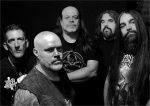 but overall it is good. Blood Feast‘s The future state of wicked is a satisfying and entertaining old-school thrash album, full of catchy choruses, riffs that made me air-guitar, and cool vocal patterns. It could have easily been released in the mid-1980s. Broken Hope‘s Mutilated and assimilated is enjoyable, I listened to it quite a few times but I cannot say that I enjoyed it as much as the previous one. The input by the relatively new members is quite obvious as there are quite a few more “modern” elements. The end of “Malicious meatholes” is reminiscent of Atheist. Although I did not love this album I have no doubts that I will eventually revisit it and discover interesting things about it. On Swine plague, Dead Head offer excellent thrash in the vein of Slayer and Demolition Hammer. The band members are seasoned veterans and this album definitely surfaces in the disappointing swamp of new wave of traditional thrash bands. Kreator released an album that does not stray from the band’s post Violent revolution (2001) style, namely a more melodic and anthemic Coma of souls style of thrash. Although I am not a big fun of this style – and I wouldn’t expect Kreator to ever reach the heights of their 1985-1995 non-stop progress and brilliance – I do like all the albums of this period (Enemy of god (2005) and Phantom antichrist (2012) a bit less). I highly respect Mille and I definitely enjoy the riffs, vocals and speed of this album, but I could do without all the anthemic moments. Expulsion‘s Nightmare future E.P. is awesome and it stinks off Repulsion. Listening to Olivo’s uniquely insane compositions is a pleasure, and I cannot resist thinking how awesome it would be if he collaborated with the guys from Impaled. It is only an E.P. and it’s over really quickly, but what an awesome ride! Over the years Haemorrhage have evolved to one of the most recognisable and credible grindcore bands on this planet. On We
but overall it is good. Blood Feast‘s The future state of wicked is a satisfying and entertaining old-school thrash album, full of catchy choruses, riffs that made me air-guitar, and cool vocal patterns. It could have easily been released in the mid-1980s. Broken Hope‘s Mutilated and assimilated is enjoyable, I listened to it quite a few times but I cannot say that I enjoyed it as much as the previous one. The input by the relatively new members is quite obvious as there are quite a few more “modern” elements. The end of “Malicious meatholes” is reminiscent of Atheist. Although I did not love this album I have no doubts that I will eventually revisit it and discover interesting things about it. On Swine plague, Dead Head offer excellent thrash in the vein of Slayer and Demolition Hammer. The band members are seasoned veterans and this album definitely surfaces in the disappointing swamp of new wave of traditional thrash bands. Kreator released an album that does not stray from the band’s post Violent revolution (2001) style, namely a more melodic and anthemic Coma of souls style of thrash. Although I am not a big fun of this style – and I wouldn’t expect Kreator to ever reach the heights of their 1985-1995 non-stop progress and brilliance – I do like all the albums of this period (Enemy of god (2005) and Phantom antichrist (2012) a bit less). I highly respect Mille and I definitely enjoy the riffs, vocals and speed of this album, but I could do without all the anthemic moments. Expulsion‘s Nightmare future E.P. is awesome and it stinks off Repulsion. Listening to Olivo’s uniquely insane compositions is a pleasure, and I cannot resist thinking how awesome it would be if he collaborated with the guys from Impaled. It is only an E.P. and it’s over really quickly, but what an awesome ride! Over the years Haemorrhage have evolved to one of the most recognisable and credible grindcore bands on this planet. On We  are the gore they offer their well-known brand of awesome grindcore, albeit currently devoid of the sick carcass-inspired melodies of their gore-grind days. Their new album is catchy, like their previous full-length, with a good production and some surprising elements, such as the Dismember-sounding riff and the rock’n’roll solo on “Miss Phlebotomy”. “Intravenous molestation…” is a brief delicacy. The chorus of “Bathed in bile” could easily be in a Lock Up album. I liked it but I prefer their mid-90s – early 2000s period. Mastodon‘s Emperor of sand is in the vein of their previous two albums, that is, poppy, melodic, progressive, aggressive, sludgy and well-played metal. There are some songs that have stood out for me, including the fantastic “Ancient kingdom”, but also “Steambreather“, “Roots remain”, “Word to the wise”, the catchy “Show yourself”, and the very dynamic “Jaguar god“. I have enjoyed it quite a lot, but I will refrain from including it among my favourite albums this year because history has shown that I usually get bored with their albums after a while, and, additionally, there are so many other albums I enjoyed more. The Lurking Fear is another band in the long list of
are the gore they offer their well-known brand of awesome grindcore, albeit currently devoid of the sick carcass-inspired melodies of their gore-grind days. Their new album is catchy, like their previous full-length, with a good production and some surprising elements, such as the Dismember-sounding riff and the rock’n’roll solo on “Miss Phlebotomy”. “Intravenous molestation…” is a brief delicacy. The chorus of “Bathed in bile” could easily be in a Lock Up album. I liked it but I prefer their mid-90s – early 2000s period. Mastodon‘s Emperor of sand is in the vein of their previous two albums, that is, poppy, melodic, progressive, aggressive, sludgy and well-played metal. There are some songs that have stood out for me, including the fantastic “Ancient kingdom”, but also “Steambreather“, “Roots remain”, “Word to the wise”, the catchy “Show yourself”, and the very dynamic “Jaguar god“. I have enjoyed it quite a lot, but I will refrain from including it among my favourite albums this year because history has shown that I usually get bored with their albums after a while, and, additionally, there are so many other albums I enjoyed more. The Lurking Fear is another band in the long list of  projects where established musicians join forces to pursue a shared musical vision. The main reason I became interested in them is due to the inclusion of Andreas Axelsson, one of the masterminds behind Edge of Sanity, and more recently Tormented. From the looks of it Tormented have folded and Andreas has moved on. Axelsson has written some of my favourite songs on the album, including “With death engraved in their bones”, “Upon black winds” (in which Axelsson shows off his talent of composing authentic old-school death metal), and “Tongued with fowl flames”. Two other really good songs on the album, however, turns out were not written by him. “The starving Gods of old” (my favourite on the album) and “Winged death” are two minor masterpieces, and Lindberg’s performance especially in the former is mind-blowing. The Slayer-esque beginning of “Tentacles of blackened horror” is cool. The blatant rip-offs from Autopsy are not impressive, especially since they’ve been done to death over the last 15 years or so. The lyrics are inspired by Lovecraft’s strange universe of abominations. The sound of Cthulhu snoring in-between songs is a good touch. My initial reaction to Suffocation‘s new album, …Of
projects where established musicians join forces to pursue a shared musical vision. The main reason I became interested in them is due to the inclusion of Andreas Axelsson, one of the masterminds behind Edge of Sanity, and more recently Tormented. From the looks of it Tormented have folded and Andreas has moved on. Axelsson has written some of my favourite songs on the album, including “With death engraved in their bones”, “Upon black winds” (in which Axelsson shows off his talent of composing authentic old-school death metal), and “Tongued with fowl flames”. Two other really good songs on the album, however, turns out were not written by him. “The starving Gods of old” (my favourite on the album) and “Winged death” are two minor masterpieces, and Lindberg’s performance especially in the former is mind-blowing. The Slayer-esque beginning of “Tentacles of blackened horror” is cool. The blatant rip-offs from Autopsy are not impressive, especially since they’ve been done to death over the last 15 years or so. The lyrics are inspired by Lovecraft’s strange universe of abominations. The sound of Cthulhu snoring in-between songs is a good touch. My initial reaction to Suffocation‘s new album, …Of  the dark light, was laden with disappointment. The production, the plastic drum sound, and the monotonous vocals alienated me and it took me a while to revisit the album for a second listen. To be honest my expectations were low, as a result of the lackluster listening experience associated with the previous two Suffocation albums. Just like with Pinnacle of bedlam (2013), I thought that Frank sounded disinterested and his voice was over-produced. Nevertheless, after a few more listens I started overcoming some of those elements that I found disappointing, and I realised that most of the riffing is excellent, and that overall I prefer this album to the previous two. “Return to the abyss” is a masterpiece in the true Suffocation style, with Hobbes’s manic riffing, twisted melodies and super-heavy break-downs on fire. In my book this song is inducted in the Hall of most awesome Suffocation tunes. Moreover, both in this song and in “Caught between two worlds” the band is trying a couple of things that could be considered novelties in the entrenched style of the band. The elements to which I am referring are the melancholic tremolo-picked riff in the last part of the latter, and the weird melody in the end of the former, which reminded me of the melody at the end of “Axeman” by Amebix. Another new element is the inclusion of Suffocation’s live-session-singer in some of the songs, which I think is a good move. Another problem that I have is that some changes lack cohesion. The ending of “The violation” is one example and the end of “The warmth within the dark” another; in both cases it feels like the song has ended before it resumes with a brief section that feels random. Incantation‘s Profane nexus is another high quality release by Incantation. In my opinion the sound is more primitive than on the previous album, and Alex Bouks’ absence is noticeable. I haven’t paid to much attention to it, and this relative absence of interest explains its position out of the top-10 list, but I suspect I will eventually love this album. Not many bands can write songs of the quality of “Incorporeal despair” and “Lus sepulcri”.
the dark light, was laden with disappointment. The production, the plastic drum sound, and the monotonous vocals alienated me and it took me a while to revisit the album for a second listen. To be honest my expectations were low, as a result of the lackluster listening experience associated with the previous two Suffocation albums. Just like with Pinnacle of bedlam (2013), I thought that Frank sounded disinterested and his voice was over-produced. Nevertheless, after a few more listens I started overcoming some of those elements that I found disappointing, and I realised that most of the riffing is excellent, and that overall I prefer this album to the previous two. “Return to the abyss” is a masterpiece in the true Suffocation style, with Hobbes’s manic riffing, twisted melodies and super-heavy break-downs on fire. In my book this song is inducted in the Hall of most awesome Suffocation tunes. Moreover, both in this song and in “Caught between two worlds” the band is trying a couple of things that could be considered novelties in the entrenched style of the band. The elements to which I am referring are the melancholic tremolo-picked riff in the last part of the latter, and the weird melody in the end of the former, which reminded me of the melody at the end of “Axeman” by Amebix. Another new element is the inclusion of Suffocation’s live-session-singer in some of the songs, which I think is a good move. Another problem that I have is that some changes lack cohesion. The ending of “The violation” is one example and the end of “The warmth within the dark” another; in both cases it feels like the song has ended before it resumes with a brief section that feels random. Incantation‘s Profane nexus is another high quality release by Incantation. In my opinion the sound is more primitive than on the previous album, and Alex Bouks’ absence is noticeable. I haven’t paid to much attention to it, and this relative absence of interest explains its position out of the top-10 list, but I suspect I will eventually love this album. Not many bands can write songs of the quality of “Incorporeal despair” and “Lus sepulcri”.
The following 10 albums are my favourite from this year. Between the second and the seventh albums in the list I cannot say with certainty which one I like the best, and the ordering has changed several times over the last few months. In my opinion they are all brilliant albums, reflecting a fantastic year in popular non-mainstream music.
Neocaesar’s debut is the undisputed album of the year. I cannot overstate how happy this release has made me. Neocaesar is a band composed of four ex-Sinister members. These are not any ex-Sinister members though. We’re talking about Mike, the absolute death metal vocalist who contributed some of the most breathtaking performances in three classic albums (Cross the Styx (1992), Diabolical summoning (1993), Hate (1995)), Bart, one of the absolute composers, who wrote unprecedented masterpieces for four classic albums (Diabolical summoning (1993), Hate (1995), Aggressive measures (1998), Creative killings (2000)), Erik, who sang on the magnificent Aggressive measures (1998), and Michel, who played bass on the classic Bastard saints E.P. (1996). Here, Erik plays the drums, and he is an absolute beast at that too! This album is unique and perfect from beginning to end. It contains eight astounding songs plus two dark instrumental pieces. The introductory instrumental song is dark and brooding; such a classy way to start an awesome album! Each song is craftily put together. Amazing melodies, spell-binding riffs, and infernal vocals by a truly genius vocalist. Bart moves within chord progressions that make every riff sound evil and monumental, and he has never strayed from this approach throughout his career. The way he combines different riffing techniques is also amazing; palm-muting, triplets, tremolo-picking, accented dissonant chords, are craftily used, each riff a genius combination of different techniques, to articulate unique sounding musical sentences. The production is awesome, the guitar and bass tones are fantastic, the drum sound is real (and, as opposed to Erik’s work with Warfather, his drumming here is fantastic and much more focused), and the contributions of all band members are equally audible. THIS is death metal. For a more detailed review of the album, please read this.
 2. Desultory – Through aching aeons
2. Desultory – Through aching aeons
After their remarkable comeback album in 2010, Counting our scars, I have been thirsting for new music by one of Sweden’s most awesome bands that defined melancholic death metal. It took seven years for new music to surface, I imagine due to day jobs and other non-music related responsibilities that non-mainstream musicians like the members of Desultory probably have. Through aching aeons feels like a fiercer Counting our scars, as there is a complete absence of entirely slow songs. Instead here we have more blasting sections, weirder riffs, less conventional song-structures, more frequent tempo changes, and a more growled approach to singing, in what might easily be Desultory’s best album. “Beneath the bleeding sky” is a monster, in a way similar to “This broken halo” in that it is a fast song full of awesome riffs, and has a very catchy melancholic chorus (the first time around followed by an emotive guitar solo). It is a song beautifully crafted, from the dark menacing first riff to the beautiful acoustic outro. This one along with “Divine blindness”, “Slither”, and “In this embrace”, are my favourite songs on the album, although every song has awesome things to offer. Generally, songs structures are complicated and, at times, might sound a bit incoherent but this can be a good thing; it means that the listener has to invest more time and effort connecting the various parts in order to perceive each song as a coherent whole. Johnsson’s manic style of drumming elevates the songs to a new level of awesomeness, although, in my opinion, the constant alterations between the kick-drum and the snare in leading the beat can get tiring. The band decided that this is their final album, and in a way it feels like they have come full circle. They will be sorely missed.
Propagandhi’s previous masterpiece, Failed states (2012), had its own space in the best-of list of that year. Victory lap is another masterpiece in the classic Propagandhi tradition. Comparing it to their back-catalogue I would say that it is not much different to Failed states, but it is definitely less intense and heavy compared to Today’s empires… (2001), Potemkin… (2004), and Supporting caste (2008). The new album is mellower sonicaly, with lighter distortion, and some clean riffing (on “Lower order”, one of my favourite songs off the album). It is a beautiful album and it contains everything that is great about Propagandhi. The progressive instrumental end of “Cop out of frame” is sheer perfection, the refreshing speed and vocal pattern of “Letter to a young anus” are awesome, Todd’s classic depressing tunes and lyrics in “Nigredo” and “When all your fears collide” (the latter also including some intense hardcore moments) are extremely emotive, and the list goes on. I bet they got the riff in the middle of “Tartuffe”, a genius song, from Iron Maiden‘s last album (I’m thinking the intro riff of “When the river runs deep”). There’s really not much else to say about a band whose inspiration, but also kindness and love for each other and the world shine through their music. Listening to Propagandhi is humbling.
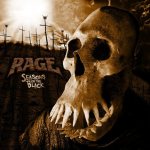 4. Rage – Seasons of the black
4. Rage – Seasons of the black
Having experienced the several ups-and-downs of Rage’s career over the 22 years I’ve been listening to them, I have grown skeptical of anything new by this seminal heavy metal band led by one of my all-time favorite song-writers, Peavy Wagner. Although I decided to attribute the dramatic deterioration of Rage’s sound to the compositional takeover by Victor Smolski, I cannot ignore that Peavy had something to do with it as well. Given that Rage’s beautiful previous album (i.e. The devil strikes again) is only one year old I was unsure whether Peavy and co., would be able to repeat the feat. I was then pleasantly surprised, as Seasons of the black is an album chock-full of excellent songs. I would have to say that Seasons and The devil are equally good. Overall, whilst The devil strikes again is reminiscent of the Black in mind-End of all days era, Seasons – even faster and even more melodic – goes even further back to the Trapped-Ten years period. Peavy has come up with some of his best melodies ever, and I find hard to believe how Peavy’s potential to write this wonderful stuff was dormant for those last years with Smolski. Marcos has kept the riffing at a high level (check out the furious beginning of the album, the main riff of “Time will tell”, and the awesome guitar work on “Justify”), and his solos beautiful, to the point, and only when needed. The same goes for Lucky, whose drum patterns, awesomely executed fills, and perfectly situated double bass serve perfectly serve each song. “Time will tell” is perhaps the song that best represents Peavy’s unique style of song-writing; a true masterpiece with an unorthodox chorus typical of old Rage (Peavy makes me so happy…). The same goes for “All we know is not” (the first few seconds hint to “No sign of life” off Ten years in Rage), another frenzied headbanger in true Rage style with a genius chorus. “Septic bite” is another cool song that – for those who like comparisons – stinks off The missing link-era melodies (and that bass-drum count near the end). “Serpents in disguise” is an immaculately put together song, with a beautiful chord progression, chorus, and great pace. Another straightforward, super-heavy song with an infectious chorus, “Walk among the dead”, could have easily been in 10 years in Rage. “Justify” is another brilliant song, but the intro melody, in my opinion, feels a bit out-of-place in a Rage album (too anthemic). The last song is reminiscent of something that could be found in XIII or Soundchaser, and I like it but is my least favourite song on the album. This is the true Rage, insofar as Rage is Peavy’s band and his vision should be what guides songwriting. This album is a gift to all those Rage fans who loved the band in the early-mid 1990s.
The news of a new band by Karl Willetts, Andrew Whale, and Frank Healy was very welcome, as both Benediction and Bolt Thrower are unique and two of my all time favourite bands. I have to admit that when I found out that the main composer is Scott Fairfax, a younger musician lacking a noteworthy record in death metal songwriting, I kind of lost interest. All skepticism disappeared when I listened to the opening song, i.e. “Memoriam”, a wonderful song, I assume a memorial to Martin Kearns, with incredible lyrics and performance by Willetts. The second song, “War rages on” is an incredible assault on the senses. The sample in the beginning is haunting, and the way it bleeds into the intro of the song is genius. The main riff is devastating, and paired with the massive drumming produce the sonic equivalent of an earthquake. I haven’t heard something that powerful in a long time. Each song deserves its own special mention because all of them are amazing. “Reduced to zero” is another massive epic, its different parts weaving a beautiful musical narrative. Whale’s off-beat playing during the first part of each verse is perfectly complementing the tension of the riff, and the double-bass during the second part is monumental. The more manic sections on songs like “Surrounded by death” and “Resistance” send chills down my spine, and the closer is another epic tour de force. It is worth noting that the chilling ending is narrated by Lynda Simpson from Sacrilege, a band to which both Bolt Thrower owe at least 50% of their sound! It is clear that even though our famous musicians are not the main composers, Whale’s awesome drum patterns and Karl’s unbelievable singing and lyrics make what those songs are. Without those two musicians, Scott’s songs wouldn’t have been what they are. A masterpiece.
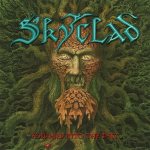 6. Skyclad – Forward to the past
6. Skyclad – Forward to the past
I cannot know if Satan’s reunion has something to do with the freshness and power of Skyclad’s new album, but that could be the case. Forward to the past feels like it’s been put out by a new band filled with the excitement and zest of youth. The thematic orientation of the album I guess plays on both the band’s interest in tradition (folk) but also on the tendency of the world to go backwards to scary things like nationalism (as opposed to cosmopolitanism) and fascism (as opposed to not being an utter piece of shit). The song move between the more traditional tunes (“The queen of the moors”, “Starstruck?“) and the more in your face thrashy tunes (“State of the union now”). The ballad titled “Words fail me” is a standout track. The beautiful (and literal) instrumental “Unresolved” (a song one might think was composed by Georgina and Steve, but is actually one of Dave’s compositions) is a nice break from the more up-tempo, festive atmosphere. Another song that stands out and is sure to become a live favourite is “The queen of the moors”, a catchy folk tune based on a poem by John Keats. “Change is coming” is another beautiful fast paced song, with awesome lyrics and infectious main riff and chorus. The only part of the album I disliked was “A heavy price to pay”, a song with fantastic music but lame lyrics. Overall, this is an inspired album that made me appreciate Skyclad even more, and urges me to discover the period after Prince of the poverty line (1994) which I have neglected.
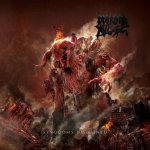 7. Morbid Angel – Kingdoms disdained
7. Morbid Angel – Kingdoms disdained
I was really looking forward to listening to the new Morbid Angel album, as it is a band that I’ve worshiped since the days of my youth and it’s never disappointed me. Up until Formulas fatal to the flesh (1998) Morbid Angel had been evolving, capturing the attention and colonising the imaginations of thousands of musicians and fans around the world. I remember that by the late 1990s I would discover a new Morbid Angel clone per week, and that included both new bands (e.g. Poland’s Devilyn, and Holland’s Centurion) and old bands (e.g. Poland’s Vader, and Canada’s Gorguts). In my opinion, the only one time Morbid Angel did not offer something terribly new was with Gateways to annihilation (2002). The new album continues down the same path that Trey went after Vincent left in the mid-1990s. After the two really good Warfather albums I was curious about what Tucker could contribute. As it turns out, Tucker gives astounding vocal performances on the new album and contributes some amazing music and lyrics too. Kingdoms disdained is a new unique addition to the Morbid Angel list of unique sounding albums. The album is extremely brutal and swampy, like FFTTF, although this time around Trey’s compositions are even more noisy and discordant, and the overall sound and production darker. I would imagine that for many people the loss of classical musicality of the classic Morbid Angel period (which includes the Covenant-sounding Heretic) will be missed, but this “new” approach still has things to offer. As usual there is a variety of structures and no two songs sound similar. In “Garden of disdain”, one of the more monolithic songs on the album, what stands out is the darkness evoked through Tucker’s infernal voice and the nuances of background noise. On the opposite end of the compositional spectrum, “Architect and iconoclast” is a complex, majestic, breathtaking song, at the moment my favourite on the album. The absolute genius end of “The pillars crumbling” can only be composed by Trey, and can only be heard in a Morbid Angel album. Songs like “From the hands of kings”, “For no master” and “The fall of idols” stand out for their sheer brutality and speed. “The righteous voice” is another relentlessly brutal song where at times the more classical musicality of Morbid Angel can be heard. “Paradigms warped” is a classic swampy monster of a song. The opener, “Little piles of arms”, is already a classic in my opinion; awe-inspiring vocal patterns, unique riffing, and complex structure. Overall, this is another album from the master of the death metal art (Trey that is) that once again separates the leaders from the followers.
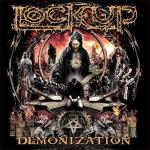 8. Lock Up – Demonization
8. Lock Up – Demonization
I have said it before and I will say it again: Embury fell in the cauldron of riffs when he was a baby. The addition of Anton since the previous album has made Lock Up‘s sound a bit more thrashy; grindcore with a good dose of Slayer in the mix. Kevin Sharp’s inclusion is genius, as he contributes his rare brand of furious and insane vocals to the mix. The vocal patterns on “Void” sounds like something off Need to control (1994). Once again, those weathered grind craftsmen give lessons in fury and brutality. At times groovily uplifting (“Desolation architect”), at other times sluggishly heavy (“Demonization”), or moshingly mid-tempo (“Foul from the pure”, “Void”), or harcorely powerful (“The plague that stalks the darkness”), but mostly grindingly fast (“Secret parallel world”, “Locust“, “Demons raging”, etc.). I can say with conviction that this is a brilliant album.
Paradise Lost has satisfied my need for excellent music album after album without fail for many years. The arrival of their new album, Medusa, did the same. This album feels even darker, slower, more brutal, and less melodic, reminiscent of Lost Paradise and Shades of god. The band suggested that it is reminiscent of Gothic, but I would disagree; nothing can ever come close to the style of Gothic. It was a one-off and I don’t think even Greg knew what he was doing when he created that masterpiece. Once again Nick makes heavy use of his growling vocals, and, as opposed to The plague within, he sounds confident. The only two songs where he predominantly uses his normal voice are the haunting “The longest winter” and the melancholic “Medusa”, maybe my favourite song on the album. “Fearless sky” is a long song that goes through various transformations, embracing different facets of Paradise Lost’s style. “Blood and chaos” is an instant hit, an extremely catchy song. “Until the grave” is another great song with a memorable chorus. “No passage for the dead” has some amazing dissonant moments reminiscent of the Shades of god era. “The longest winter” and “Gods of ancient” are two songs I am not particularly loving right now. In my opinion it would have been so much better if either of those songs were replaced by the magnificent “Shrines”, a bonus track I cannot believe was left out of the standard version 0f the album! Although this album feels at times a bit lazy to me, there are some real gems in there.
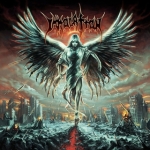 10. Immolation – Atonement
10. Immolation – Atonement
Immolation’s new album follows the well-trodden path that Immolation has paved over the decades. It is a unique and majestic style that doesn’t get boring. I have to admit that what distinguishes this album from the two previous ones, is the ridiculously heavy “Lower”. This song is really catchy, and relatively conventional, compared to Immolation’s usual unorthodox compositional style. Immolation is not known for its catchy songs, but, in my opinion, “Lower” is as close to writing one it can get with them (in the past they have come close with songs like “The weight of devotion” or “Dead to me”). I cannot have enough of this song! Of course there are numerous other great songs in this album, including “Fostering the divide”, “Above all”, “Epiphany” and another extremely catchy song, “Destructive currents”, whose tempo also reminds of Immolation’s earlier days. “When the jackals come” is another song that stands out, as it has this weird trill in one of the main melodies, and a catchy chorus. Nothing terribly new here, but Immolation’s style is always welcome, and in my opinion the production and drum sound are not as annoying as in the previous two albums.
2017 PLAYLIST

